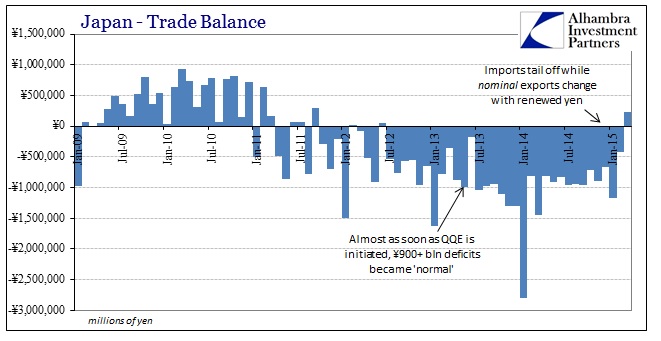Potemkin on the Pacific—–Abenomics Is Still Failing
For the first time since June 2012 Japan has attained a trade surplus. It is, however, premature to interpret that as an end to the impoverishment the island has undertaken these past three years, the last two under QQE. There are various reasons for the end of the negative trade imbalance, but the most significant surround the Chinese New Year.
China’s annual holiday plays havoc with any number of economic accounts of its own, but it should not be surprising to see its closest trade partners under the same difficulties in measurement. Unfortunately for Japan, as QQE was intended to foster trade in the other direction, China remains the most visible and deepest supplier for Japanese industry. As such, the level of activity from China is the largest single source in variability – with crude oil imports now a distant second, contrary to expectations.
The overall March surplus for Japan was just under ¥230 billion, but imports from China fell 19.4% in March. That was undoubtedly an adjustment for activity in February, as imports from China surged almost 40% that month. This exchange in monthly trade balance with China more than accounts for the Japanese surplus: February’s deficit with China was ¥769 billion on that surge in imports, while March’s deficit came in at only ¥174 billion. Thus without the China’s variability there would still be a serious trade deficit in March for Japan overall.
…click on the above link to read the rest of the article…
